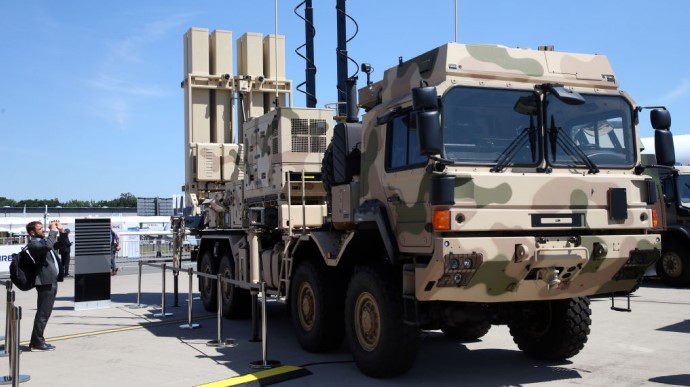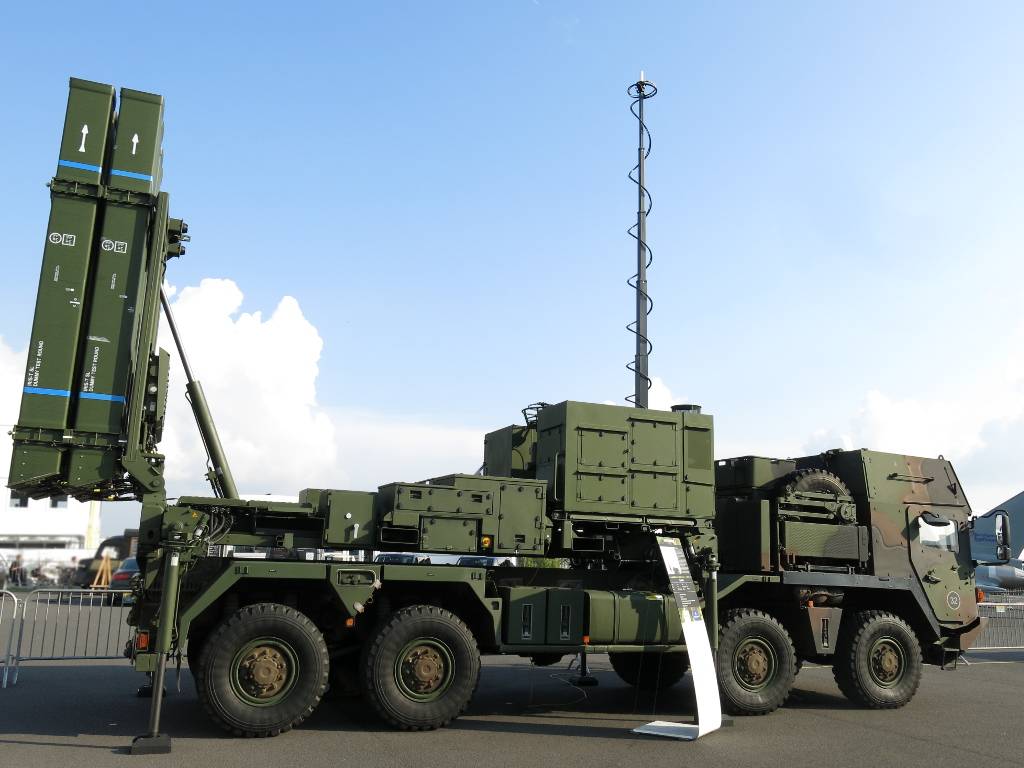Who said IRIS-T is working on its own?

FYI
every air defense system on the world relies on large surveillance and tracking radars which pass the information to shorter range fire control radars ("cue in".)
FDC radars take care of targeting for fire calculations, tracking etc. And this is a rather short range to cover, the effective range of current medium-range GBAD missiles is around 40km; even the work-in-progress IRIS-T SLX is only promising 80km at best.
My uneducated guess is the launcher radar's instrumented range about 2x of the missile's range, but we can ask @molnibalage to chime in, he knows these things by heart, I bet.

The NASAMS, IRIS-T or the Israeli GBAD systems all work the same way, the difference is only in the range, how each country splits up the roles between different radar systems. With IRIS-T SL you can integrate almost any radar, like AESA SAAB Giraffes, Hensoldt 4Ds, Thales Ground Masters, you name it.
To hit an incoming ATACMS, SS-21 ("Tocska"), or Sumadiya you just need the tracking info passed down, this part is a given. Then the FDC needs to recognize it - though this could already happen at the previous level - and be able to calculate the trajectory, this is also a no-brainer (sw upgrade.)
Finally the missile needs to hit it at the rendezvous point. Since these
ballistic missiles we are talking about here are all short-range tactical ones, they are essentially nothing more than faster artillery projectiles when entering terminal phase (FYI artillery projectile is where the word
ballistic comes from, FYI.)
In Hungary they have the large, Italian-made (Selex) 500km+ NATO radar installations to provide long-range airspace surveillance. Below that they have old ex-Soviet radars which are being replaced the world's most advanced MMRs from Elta, which will cue in the American-made fire control radars in the NASAMS 3 GBAD systems. (It is basically Norwegian, but the radars are American X-band Sentinels or, if they are smart, they silently upgraded their order to get the newly offered S-band AESA GhostEye MR option; it's brand new, built on the next-gen US radar platform, debuted about a year ago.)









